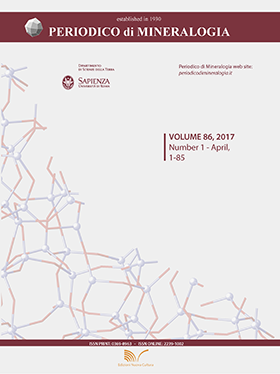Khirbet al-Batrawy ceramics: a systematic mineralogical and petrographic study for investigating the material culture
DOI:
https://doi.org/10.2451/2016PM665Keywords:
Early Bronze Age ceramic, technology, Khirbet al-Batrawy, OM, XRPDAbstract
The present paper reports the results of a mineralogical and petrographic study focused on the archaeometric characterization of Early Bronze Age pottery from the archaeological site of Khirbet al-Batrawy (Jordan), dated between 3000 and 2000 BC. Optical microscopy (OM) and X-ray powder diffraction (XRPD) analyses are used to define the nature of the raw material, the technology of the ceramic production and their developing during the centuries. The results allow us to identify 12 petrographic fabrics in which the nature of the inclusions is consistent with the geological surrounding of Khirbet al-Batrawy. The variability observed in the fabrics suggests a technological evolution during the centuries, characterized by a first start-up phase in the ceramic production, followed by a diffuse experimentation in the choice of the starting raw material and a last standardization phase. The co-occurrence of primary calcite, illite, gehlenite and diopside allows hypothesizing a firing temperature lower than 950 °C. A moderate increasing in the firing temperature is observed in the last phases of Batrawy history, suggesting a development of knowledge connected to the firing process.


